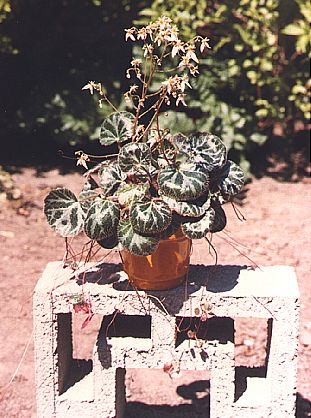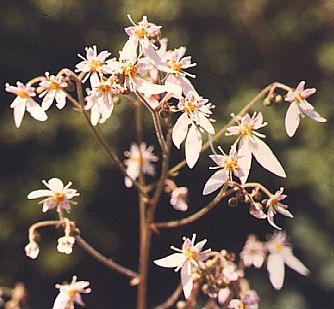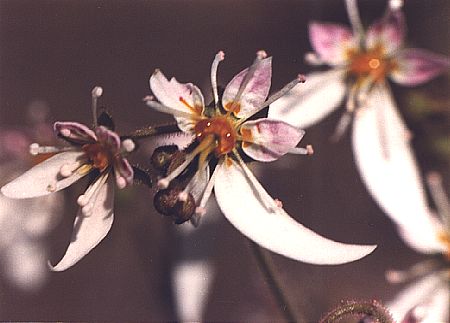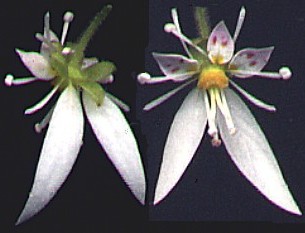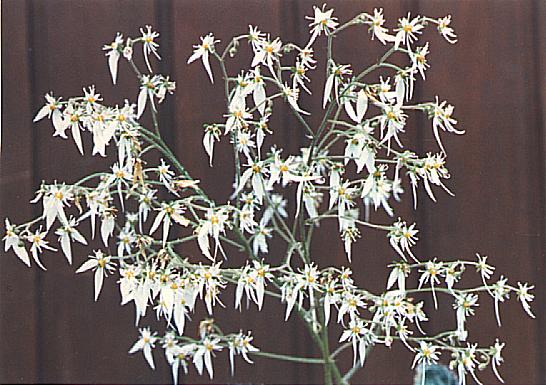De plant is winterhard, maar wordt altijd als kamerplant in een hangpot gekweekt om de rode stengels (stolonen) met hangende baby-plantjes.
De bloei verschijnt hoogst zelden,
maar is beslist de moeite waard.
Waarschijnlijk moet de plant 's winters enige tijd buiten staan en vindt de knopaanleg pas plaats na blootstelling aan enige vorst.
Te strenge vorst deed de plant bij mij echter doodvriezen gedurende de winter van 2002/2003 - mogelijk omdat hij in een pot stond, waar de vorst nog meer (van alle kanten) in doordringt dan in de volle grond. |
|
The plant is winterhardy, but is always cultivated as a houseplant in a hanging pot to give a good show of the red stems (stolons) with small plants.
Flowering hardly ever happens, though it's very decorative.
Probably, the plant should be put outside for at least some time during winter, for bud-initiation might only take place after exposure to some frost.
Too severe frost, though, caused my plant to die during winter 2002/2003 - possibly because it was housed in a pot, in which frost penetrates even more than in the ground because it comes in from all sides. |

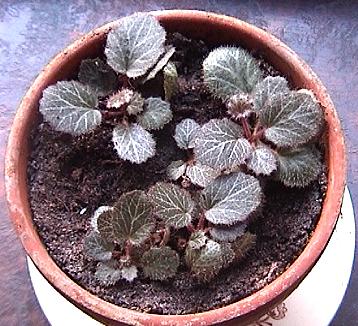
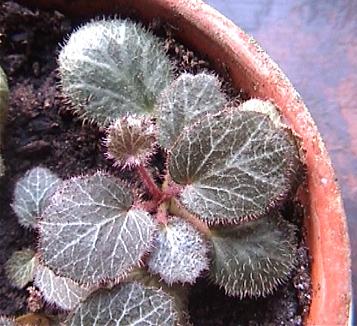
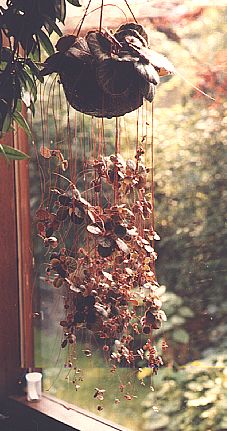 De moederplant links heeft honderden "kindertjes" aan minstens 30 stengels hangen.
Voor wie wil tellen, deze grote scan (80 K) van dezelfde foto.
De moederplant links heeft honderden "kindertjes" aan minstens 30 stengels hangen.
Voor wie wil tellen, deze grote scan (80 K) van dezelfde foto.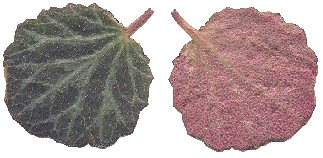 Meestal zorgt de plant op vegetatieve manier voor nageslacht, met kant-en-klare plantjes, maar er kunnen ook bloemen in komen,
zoals de foto's hieronder laten zien.
Meestal zorgt de plant op vegetatieve manier voor nageslacht, met kant-en-klare plantjes, maar er kunnen ook bloemen in komen,
zoals de foto's hieronder laten zien.